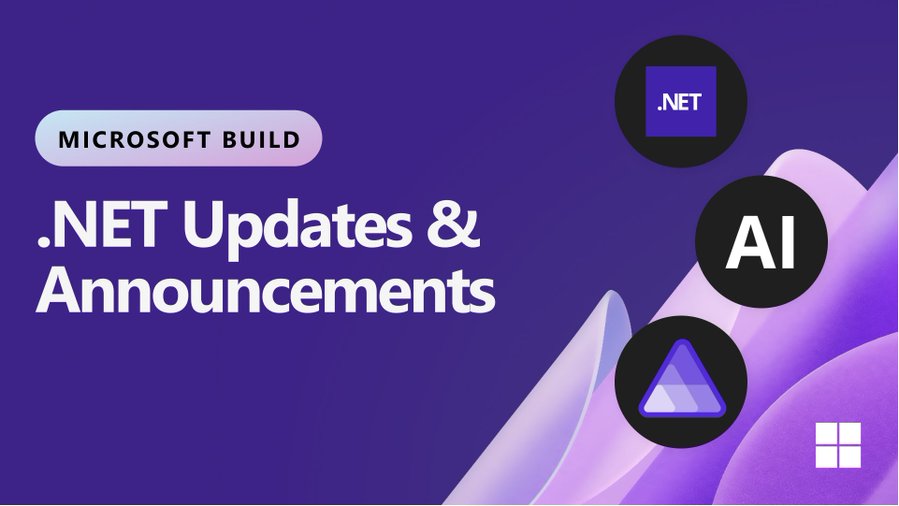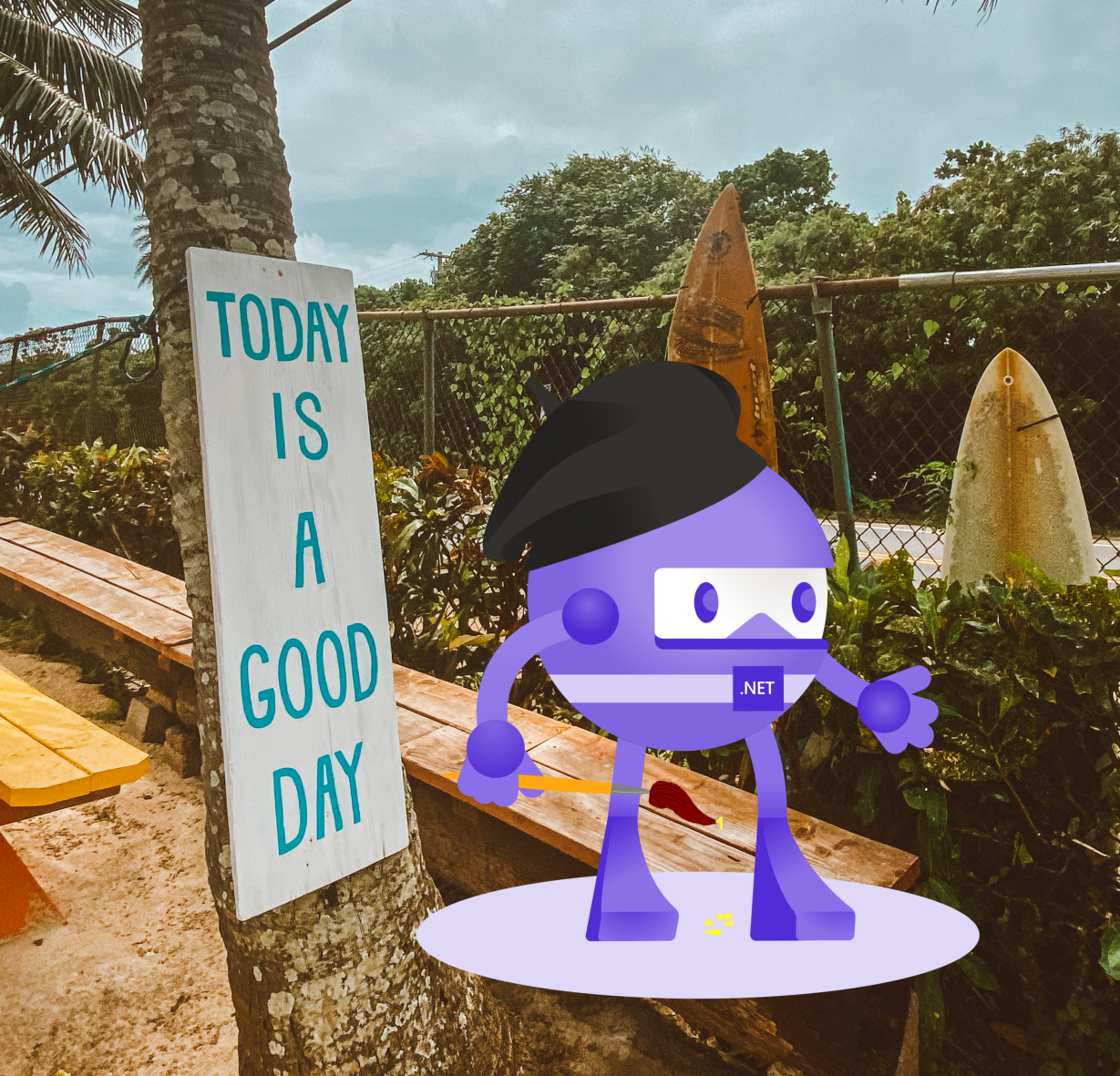Sands of MAUI: Issue #147

Welcome to the Sands of MAUI—newsletter-style issues dedicated to bringing together the latest .NET MAUI content relevant to developers.
A particle of sand—tiny and innocuous. But put a lot of sand particles together and we have something big—a force to reckon with. It is the smallest grains of sand that often add up to form massive beaches, dunes and deserts.
.NET developers are excited with the reality of .NET Multi-platform App UI (.NET MAUI)—the evolution of modern .NET cross-platform developer technology stack. With stable tooling and a rich ecosystem, .NET MAUI empowers developers to build native cross-platform apps for mobile/desktop from single shared codebase, while inviting web technologies in the mix.
While it may take a long flight to reach the sands of MAUI island, developer excitement around .NET MAUI is quite palpable with all the created content. Like the grains of sand, every piece of news/article/documentation/video/tutorial/livestream contributes toward developer experiences in .NET MAUI and we grow a community/ecosystem willing to learn & help.
Sands of MAUI is a humble attempt to collect all the .NET MAUI awesomeness in one place. Here’s what is noteworthy for the week of June 3, 2024:
.NET MAUI with VS Code
.NET MAUI is the evolution of modern .NET cross-platform development stack, allowing developers to reach mobile and desktop form factors from a single shared codebase. With increased stability and a rich ecosystem, there are lots more developers building cross-platform apps with .NET MAUI—many seeking consistent building experiences from Windows/macOS/Linux developer machines. The answer is Visual Studio Code, and the .NET MAUI developer experience in VS Code is constantly getting better. There is some great news for .NET MAUI developers using VS Code and James Montemagno produced a video—.NET MAUI XAML productivity boost in VS Code.
Visual Studio Code is the uber-popular lightweight code editor that works seamlessly across Windows/macOS/Linux. While Visual Studio continues to be the rich IDE on Windows, VS Code represents the engineering consolidation of developer tooling across platforms. The lightweight editor brings a rich Extensions ecosystem and provides consistency of developer experiences.
For .NET MAUI developers building an app visual tree in XAML, VS Code now has support for IntelliSense and Hot Reload. James walked through how developers can get started using the .NET MAUI VS Code Extension—XAML IntelliSense and Hot Reload is now built right inside VS Code, working with iOS/Android simulators or Windows/macOS apps. From property value completions, visual state management, animations and more, XAML IntelliSense just makes everything easy within VS Code and Hot Reload helps in quicker developer inner loop without having to restart deployed apps. Combined with GitHub Copilot, .NET MAUI developers on VS Code have all the rich tooling to be productive—time to make some amazing apps.

Telerik UI for .NET MAUI
Modern mobile/desktop clients or web frontends are complicated—developers can use all the help available to stay productive. Progress Telerik UI for .NET MAUI can help developers building modern cross-platform apps—professionally engineered UI components shine with consistent rendering, fine-tuned performance and dependability with documentation/support. There is a fresh Q2 2024 release out for Telerik bits, with lots of goodies for .NET MAUI developers.
It is the age of AI, and developers can benefit with the right UI that helps infuse AI benefits into apps. The new AI Prompt control across all Telerik and Kendo UI libraries allows developers to integrate Generative AI capabilities into web, mobile and desktop apps.
The Telerik UI for .NET MAUI suite earns a whole bunch of fresh new UI components—say hello to CollectionView, TemplatedButton, ToggleButton and Slider. With enterprise customers building greenfield desktop apps with .NET MAUI, Telerik UI steps up with complex UI needs—DataGrid gets new SKIAColumn and Search-as-you-type functionality, Scheduler gets better calendar integration with Appointments and Document Processing Library updates benefit all UI suites. The latest Telerik UI for .NET MAUI release embraces fresh framework advancements and AI integrations, while empowering enterprise workflows—developer productivity boost for the win.
Check it out for yourself with a free 30-day trial: Try Telerik UI for .NET MAUI!

.NET Content @ Build
Microsoft’s big developer conference happened in May—Microsoft Build was hosted in Seattle and online May 21–23, 2024. While the focus was on all things AI, there was quite a bit of buzz/updates for the .NET ecosystem, and now there is a YouTube playlist for all the recorded sessions—.NET content from Microsoft Build 2024.
Microsoft Build was a great opportunity to dive deep into the latest advancements with AI and uncover ways developers can leverage the power of AI into their workflows. Modern .NET makes it easy to infuse smartness in apps, and developers have plenty of inspiration and tools to explore AI integration from .NET apps. Aside from AI advancements, .NET enjoyed quite a bit of love—there are new features and tools designed to make .NET development faster and easier.
Modern .NET now powers cloud-native development with .NET Aspire, embraces AI advancements and empowers developers to build custom workflows with GitHub Copilot. There are language improvements with C# 13 and performance tuning across .NET to streamline execution times with better memory management. There are also tons of enhancements to .NET libraries and frameworks including ASP.NET Core, Blazor, .NET MAUI, desktop stack with WinUI/WPF and more. Microsoft Build was a great conference to connect with developers globally and grow skills—lots of great .NET content to catch up on.

Architecting Blazor Hybrid
.NET MAUI is squarely meant for developers to build native mobile/desktop apps—however, armed with modern smart WebViews, .NET MAUI is more than capable to welcome web content to native land. In fact, Blazor/JavaScript developers should feel empowered to bring web UI components, routing, styling and more to native cross-platform .NET MAUI apps, while gaining complete native platform API access. The promise of Blazor Hybrid apps is easy to see, but real-world apps have unique needs and complications with code sharing. Chavdar Stoenchev from Resolute Software joined an aging developer for a .NET Dev Show livestream—architecting real-world Blazor Hybrid apps.
The duo started out with a refresher on .NET MAUI and Blazor Hybrid apps—the ease of welcoming Blazor developers to native mobile/desktop world should be well-established by now. Chavdar walked through a polished app for restaurant Point of Sale system—it was originally written as a web app meant to run on browsers. With most stores/restaurants using tablets or kiosks, a Blazor Hybrid app would be a nice fit to bring things over to native land, and that’s exactly what Chavdar has done with some careful orchestration.
Chavdar ran through a pixel-perfect demo of the app running seamlessly across mobile and desktop, while code sharing with web—careful architecture means being mindful as to how to work with storage/cookies/device APIs. While the Blazor Hybrid promise is clear, it’s good to see real-world success stories—developers now have a lot of flexibility to mix and match native with web technology stacks.

.NET MAUI UI July
It’s June. And that means it’s time to start thinking about #MAUIUIJuly again. Based on an idea originally started for Xamarin by Steven Thewissen, MAUI UI July is a month-long community-driven event where anyone gets to share enthusiasm and passion for .NET MAUI. Run by Matt Goldman, this is a great opportunity for .NET MAUI developers to learn from each other—MAUI UI July is happening again for 2024.
Each day in July, MAUI UI July will add a blog post or video to the calendar, showcasing something cool of interest to .NET MAUI enthusiasts. Developers get to bookmark the July calendar and check back every day for fresh content. 2024 will mark the third year for MAUI UI July—past years have seen some fantastic content from the .NET MAUI developer community.
MAUI UI July for 2024 is now open to community contributions—anyone interested can pick a topic and choose a date in July for the content to go live. Developers can reach out to Matt to lock in their content for the .NET MAUI UI July 2024 schedule—together, we can make this year awesome and have wonderful content to learn from. Cheers to that.

That’s it for now.
We’ll see you next week with more awesome content relevant to .NET MAUI.
Cheers, developers!

Sam Basu
Sam Basu is a technologist, author, speaker, Microsoft MVP and gadget lover. With a long developer background, he also worked as a Developer Advocacy Manager for advocating modern web/mobile/cloud development platforms on Microsoft/Telerik/Kendo UI technology stacks. His spare times call for travel, fast cars, cricket and culinary adventures with the family.

